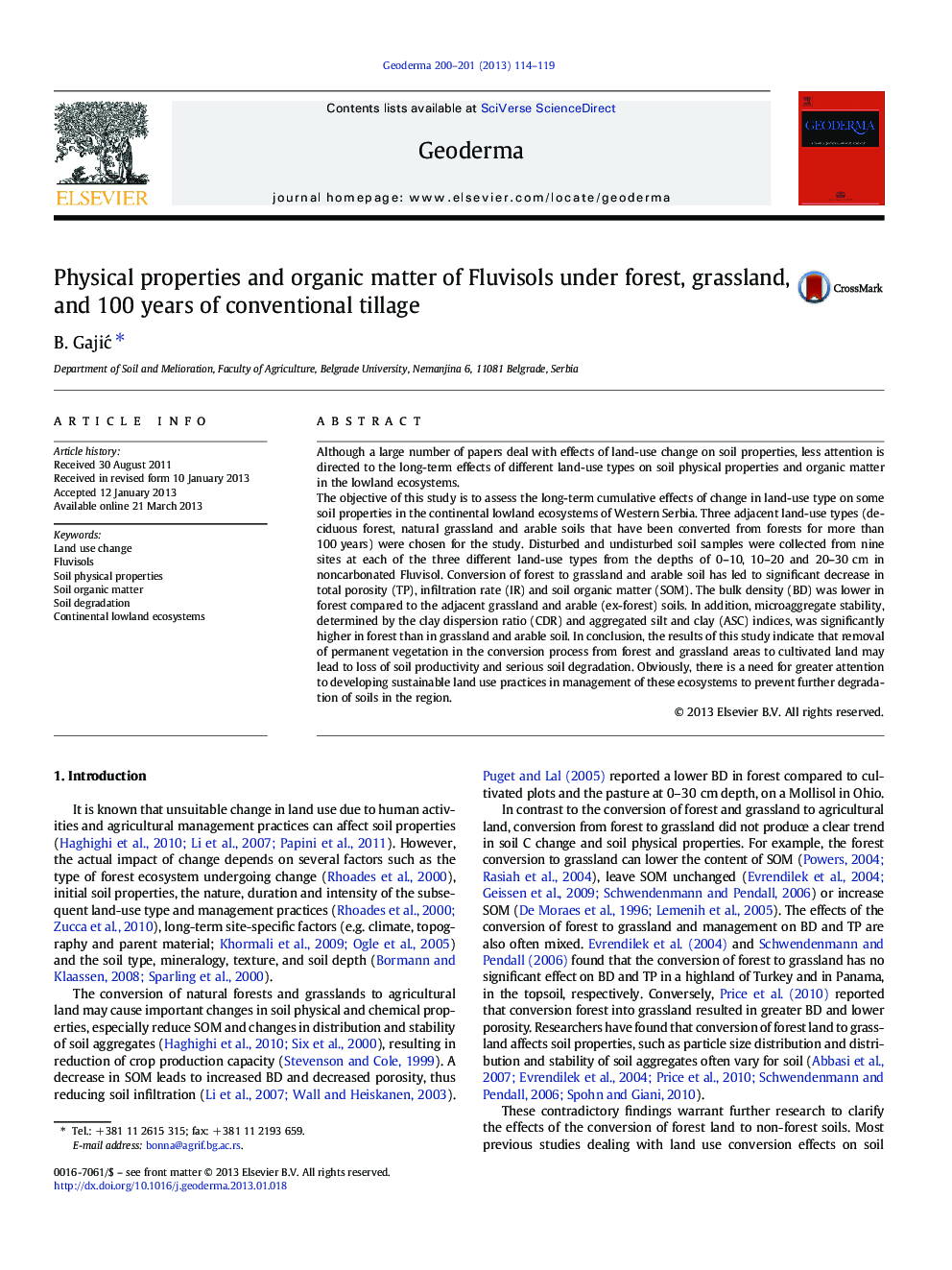| Article ID | Journal | Published Year | Pages | File Type |
|---|---|---|---|---|
| 4573523 | Geoderma | 2013 | 6 Pages |
Although a large number of papers deal with effects of land-use change on soil properties, less attention is directed to the long-term effects of different land-use types on soil physical properties and organic matter in the lowland ecosystems.The objective of this study is to assess the long-term cumulative effects of change in land-use type on some soil properties in the continental lowland ecosystems of Western Serbia. Three adjacent land-use types (deciduous forest, natural grassland and arable soils that have been converted from forests for more than 100 years) were chosen for the study. Disturbed and undisturbed soil samples were collected from nine sites at each of the three different land-use types from the depths of 0–10, 10–20 and 20–30 cm in noncarbonated Fluvisol. Conversion of forest to grassland and arable soil has led to significant decrease in total porosity (TP), infiltration rate (IR) and soil organic matter (SOM). The bulk density (BD) was lower in forest compared to the adjacent grassland and arable (ex-forest) soils. In addition, microaggregate stability, determined by the clay dispersion ratio (CDR) and aggregated silt and clay (ASC) indices, was significantly higher in forest than in grassland and arable soil. In conclusion, the results of this study indicate that removal of permanent vegetation in the conversion process from forest and grassland areas to cultivated land may lead to loss of soil productivity and serious soil degradation. Obviously, there is a need for greater attention to developing sustainable land use practices in management of these ecosystems to prevent further degradation of soils in the region.
► Change in land use had a great impact on soil properties in the lowland ecosystems. ► Tillage of forested lands resulted in deterioration of soil physical properties. ► Forest showed significantly higher porosity and infiltration than nonforest soils. ► Conversion of natural forest to agricultural land alters microaggreragte stability. ► SOM decreased under grassland and arable land compared with that of forest soil.
